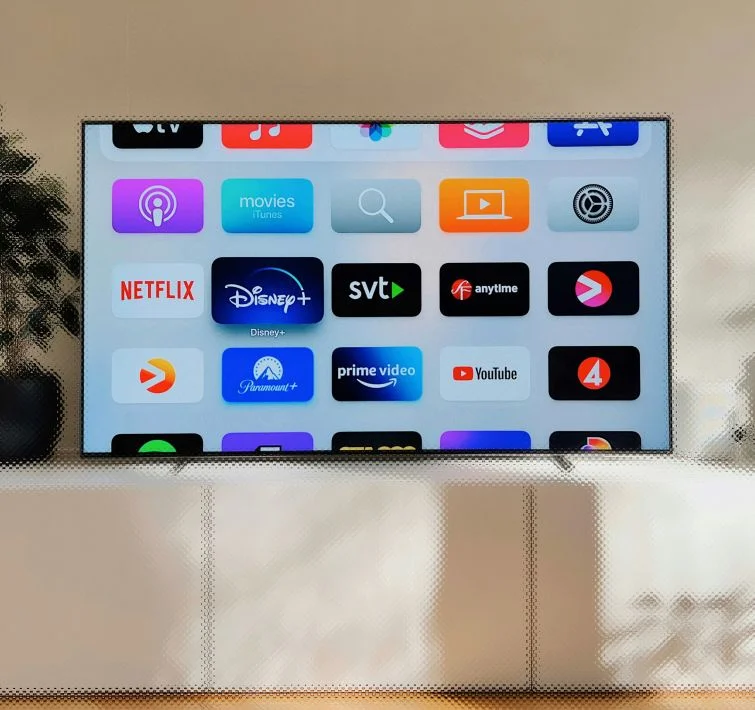A Marketer's Guide to Connected TV (CTV) Advertising: Strategy, Measurement, and Key Metrics

Written By
Team Quantcast

Learn what CTV advertising is, why it matters, and the essential metrics that help brands measure, optimize, and prove campaign performance.
This guide is for marketers, media buyers, and brands asking how to effectively reach "cord-cutting" audiences and prove the value of their media spend. It answers the most common questions about Connected TV (CTV) advertising, from basic definitions to the specific metrics required to measure and optimize campaign performance.
What Is Connected TV (CTV) Advertising?
Connected TV (CTV) advertising is the placement of video ads on television sets that are connected to the internet.
These ads are served to viewers who are streaming content on-demand, outside of the traditional broadcast or cable TV ecosystem.
Common CTV devices include:
- Smart TVs: (e.g., Samsung, Vizio, LG TVs with built-in internet)
- Streaming Devices: (e.g., Roku, Amazon Fire TV Stick, Apple TV)
- Gaming Consoles: (e.g., Xbox, PlayStation)
How Is CTV Advertising Different from Traditional TV?
Unlike traditional linear TV, which relies on broad demographic estimates, CTV advertising provides the data-rich capabilities of digital marketing.
- Addressable Targeting: Ads can be delivered to specific households or audience segments based on data (e.g., demographics, interests, purchase behavior).
- Programmatic Buying: Most CTV ads are bought and sold programmatically, using automation to improve efficiency and targeting.
- Real-Time Measurement: Provides immediate access to digital performance metrics, not just estimated Gross Rating Points (GRPs).
- Interactivity: Many CTV ad formats allow for direct viewer action, such as scanning a QR code, clicking a remote, or visiting a website.
Why Is CTV Advertising a Priority for Brands?
Brands are allocating more budget to CTV advertising to solve several key challenges and unlock new opportunities:
- Reach "Cord-Cutters": It allows brands to connect with the large and growing audience of viewers who no longer subscribe to traditional cable or satellite TV.
- Gain Incremental Reach: CTV is essential for finding viewers who cannot be reached on linear TV, adding unique, unduplicated reach to the overall media mix.
- Enable Full-Funnel Tracking: The channel has evolved beyond awareness. With interactive ads and advanced attribution, CTV can now drive and measure direct responses, from website visits to app downloads and product purchases.
- Optimize in Real-Time: Advertisers can use live data to adjust campaigns "in-flight" to improve performance, a capability that is impossible with traditional TV buys.
How to Measure CTV Advertising: The 8 Most Important Metrics
To prove the success of a CTV campaign, marketers must move beyond basic impressions. Success depends on tracking a specific set of metrics that measure delivery, engagement, and business outcomes.
Here are the key metrics to track:
1. Reach and Frequency
- What it is: Reach is the number of unique households or individuals who saw your ad. Frequency is the average number of times each person saw it.
- Why it matters: This answers the question, "Am I reaching enough unique people without annoying them?" A balanced strategy is key. Overexposure leads to ad fatigue and wasted spend, while underexposure limits impact. A common best practice is to find the optimal frequency for your brand, which often falls between 8–14 exposures.
2. Video Completion Rate (VCR)
- What it is: The percentage of viewers who watched your video ad from start to finish.
- Why it matters: VCR is a primary indicator of ad delivery and viewer attention. Since most CTV ads are non-skippable, VCRs are expected to be very high (often over 90%). A low VCR could signal a technical problem or that the ad is being served in a poor-quality environment.
3. Cost per Completed View (CPCV)
- What it is: The average amount you pay for a single, fully completed video ad view.
- Why it matters: This is a core cost-efficiency metric. It answers, "How much am I paying for a fully engaged view?" A low CPCV combined with a high VCR indicates your campaign is cost-effective and reaching an engaged audience.
4. Engagement Rate (for Interactive Ads)
- What it is: The percentage of viewers who interacted with your ad (e.g., scanned a QR code, tapped a remote button, or visited a landing page).
- Why it matters: This is essential for any mid-funnel or direct-response campaign. It proves that viewers are not just passively watching but are actively responding to your call-to-action (CTA).
5. Brand Lift
- What it is: A measurement of how much your campaign increased brand awareness, consideration, or purchase intent.
- Why it matters: This is the best way to measure top-of-funnel impact. It directly answers, "Did my ad successfully change how people think or feel about my brand?"
- How it's measured: Typically via surveys comparing responses from an "exposed group" (saw the ad) and a "control group" (did not). The positive difference between them is the "lift."
6. Incremental Reach
- What it is: The percentage of viewers reached exclusively via your CTV campaign who were not reached by other channels, such as linear TV or digital display.
- Why it matters: This metric proves the unique value of CTV. It answers, "How many new people did I reach only on CTV that I missed with my other ad campaigns?" This is essential for justifying CTV's role in a larger media mix.
7. View-Through Rate (VTR)
- What it is: The percentage of users who completed watching the ad compared to the total number who started it.
- Why it matters: While similar to VCR, VTR is a critical metric on platforms where ads can be skipped or exited. It helps assess how compelling your ad creative is when completion isn't guaranteed.
8. Return on Ad Spend (ROAS)
- What it is: The total revenue generated for every dollar or pound spent on your CTV advertising campaign.
- Why it matters: This is the ultimate bottom-of-funnel metric. It connects CTV spend directly to revenue, answering, "For every dollar I spent, how many dollars did I get back?"
- How it's measured: This requires advanced attribution. Methods include tracking pixel-based website conversions, matching sales data to household ad exposure, or analyzing revenue lift during the campaign period.
The Power of Real-Time Measurement and Optimization
A major advantage of CTV over traditional TV is the ability to optimize campaigns in-flight.
Instead of waiting weeks for a post-campaign report, modern CTV platforms allow advertisers to:
- Monitor Performance Live: Track metrics like VCR, CPCV, and even brand lift as they happen.
- Analyze Key Drivers: Instantly understand which audience segments, streaming platforms, devices, or ad creatives are performing best.
- Re-allocate Budget: Automatically or manually shift spend away from underperforming segments and toward those driving the best results, such as higher brand lift or a lower cost-per-action.
For example, advanced measurement tools like Quantcast's Brand Lift Live provide this real-time data, allowing brands to see and act on changes in brand perception mid-campaign, rather than after the budget is already spent.
Case Study: How Pandora Used CTV to Unlock New Audiences
- Challenge: Pandora, the music streaming service, needed to expand its market share by reaching new, younger audiences (cord-cutters) who were no longer watching traditional TV.
- Solution: Pandora partnered with Carat and Quantcast to launch a CTV campaign. They used Quantcast’s audience curation platform to build custom segments targeting viewers of specific genres, such as award shows and reality TV, on their smart TVs, gaming consoles, and streaming devices.
- Outcome: The campaign successfully reached its target cord-cutting audience and achieved a 50% reduction in cost per completed view (CPCV) compared to industry benchmarks. This proved the campaign's high efficiency and its ability to connect with a new, engaged customer base.
Key Takeaways for Marketers
- CTV is a Primary Channel: It is no longer an "emerging" channel but a core component for reaching modern audiences.
- Measurement is its Superpower: CTV combines the high-impact, lean-back experience of TV with the data-rich traceability of digital marketing.
- Move Beyond Impressions: To prove value and justify spend, focus on metrics like Video Completion Rate (VCR), Brand Lift, Incremental Reach, and Return on Ad Spend (ROAS).
- Optimize in Real-Time: Use live data to improve campaign outcomes, increase efficiency, and demonstrate clear, measurable business growth.
Share article
Want to learn more about how to measure success on CTV?

